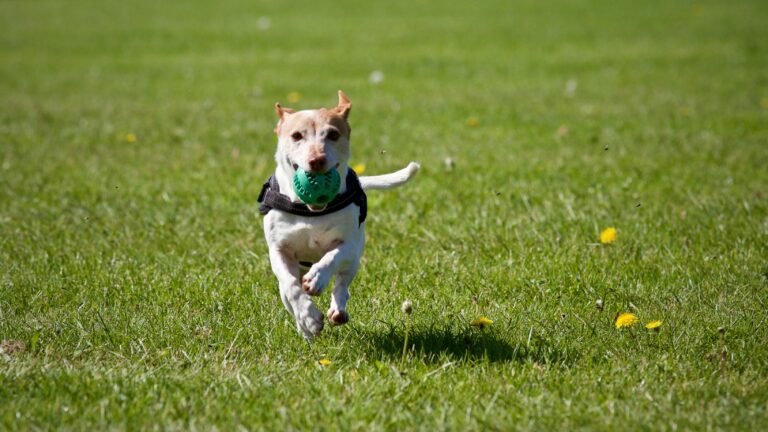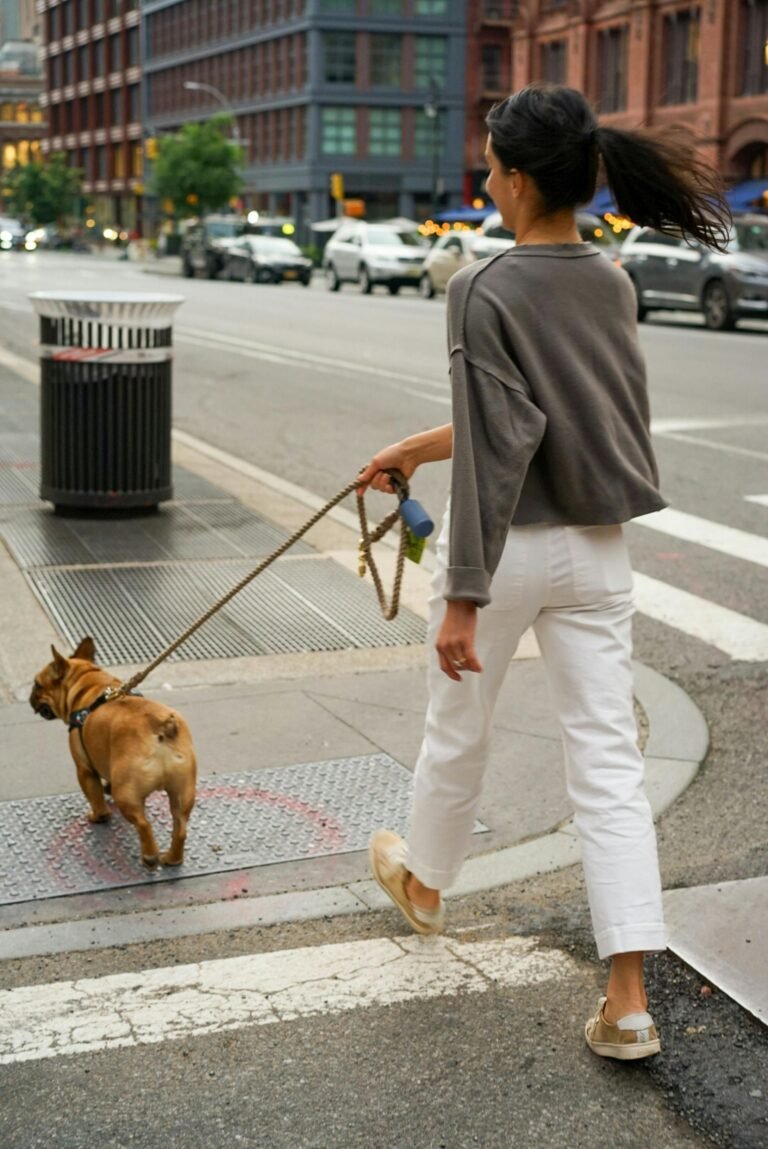Introduction
Living sustainably isn’t just about your own habits—it extends to the furry family members who share your home. While our dogs bring us joy and companionship, their consumption of meat‑based food, toys and other resources contributes to their own environmental footprint. Researchers estimate that a medium‑sized dog emits around 770 kilograms of carbon dioxide equivalent (CO2e) each year through its food consumption, waste and the resources used to care for it【300621692364239†L65-L150】. By making conscious choices, you can dramatically reduce your pup’s carbon pawprint while still giving them a fulfilling, happy life.
Understanding Your Dog’s Carbon Pawprint
A dog’s environmental impact comes from three main sources: diet, waste and energy use. The meat in most commercial pet foods requires large amounts of land, water and feed to produce, generating significant greenhouse gas emissions. Additionally, plastic toys, synthetic bedding and single‑use grooming products all add to household waste. Even everyday activities like washing your dog can require high water and energy usage. Understanding these factors helps you prioritise areas where you can make sustainable changes.
Adopt a Sustainable Diet
One of the easiest ways to reduce your dog’s carbon pawprint is by choosing an eco‑friendly diet. Meat‑heavy diets contribute heavily to a dog’s footprint because animal agriculture is resource‑intensive. Consider these strategies:
- Choose alternative proteins: Some pet food manufacturers now offer formulas made from insect protein (such as black soldier fly larvae) or plant‑based proteins. These options emit far fewer greenhouse gases than traditional beef or chicken and require less water and land to produce.
- Buy sustainably sourced meats: If your dog thrives on a traditional meat diet, look for brands that source meat from farms with strong animal welfare standards and lower environmental impact. Avoid products that rely on factory‑farmed beef, which is a major driver of deforestation and emissions.
- Try homemade or raw meals with care: Preparing home‑cooked meals lets you control the ingredients and reduce packaging. Focus on lean poultry, fish and plant proteins like lentils or chickpeas, and work with a veterinarian or veterinary nutritionist to ensure your dog gets balanced nutrition.
- Avoid overfeeding: Portion control reduces food waste and prevents obesity, which can lead to further health issues. Use measuring cups or a scale to feed the appropriate amount.
According to environmental advocates, shifting just a fraction of pet diets to sustainable proteins could significantly reduce global greenhouse gas emissions from pets【300621692364239†L65-L150】.
Invest in Eco‑Friendly Products
The toys, bedding and grooming products you buy for your dog also have environmental impacts. Make greener choices by:
- Opting for durable, natural toys: Seek toys made from natural rubber, hemp or recycled fabrics instead of plastic. Durable toys last longer, reducing waste and saving money.
- Choosing sustainable bedding: Look for beds stuffed with recycled fibre or organic cotton covers. Some companies even make beds from upcycled plastic bottles.
- Using biodegradable poop bags: Plastic bags can take decades to break down. Compostable or biodegradable alternatives made from corn starch or other plant materials break down much faster in the landfill.
- Selecting gentle, eco‑friendly grooming supplies: Many pet shampoos and cleaning sprays contain harsh chemicals that pollute water systems. Choose plant‑based shampoos and conditioners, and consider grooming wipes made of compostable materials.
Minimise Waste
Reducing waste goes beyond switching to biodegradable bags. You can also:
- Compost your dog’s waste: Specialised pet waste composters allow you to safely compost dog waste at home. Just ensure the compost isn’t used on edible gardens.
- Donate or upcycle old items: When your pup outgrows collars, harnesses or toys, donate them to shelters or repurpose them into new items like tug ropes or treat puzzles.
- Buy in bulk: Purchasing food and treats in larger quantities reduces packaging waste. Store dry goods in airtight containers to keep them fresh.
Green Hygiene and Grooming
Water usage and chemical products can quickly undermine your sustainability efforts. Practice greener grooming by:
- Bathing less often: Unless your dog gets particularly dirty, bathing every few months is usually sufficient. Over‑bathing can strip natural oils from your dog’s coat and waste water.
- Using a water‑efficient hose attachment: A low‑flow shower head or hose attachment reduces water usage when washing your dog.
- Towels over dryers: Instead of using an electric hair dryer, towel‑dry your dog and let them air‑dry in a warm room or outside on a sunny day.
- Natural cleaning products: Make your own spray cleaner with vinegar and water to wipe down paws and surfaces, or purchase eco‑friendly brands.
Responsible Travel and Outdoor Activities
Exploring the outdoors with your dog is one of life’s greatest pleasures, but travel and adventure can also generate emissions. To minimise your impact:
Introduction
Living sustainably isn’t just about your own habits—it extends to the furry family members who share your home. While our dogs bring us joy and companionship, their consumption of meat‑based food, toys and other resources contributes to their own environmental footprint. Researchers estimate that a medium‑sized dog emits around 770 kilograms of carbon dioxide equivalent (CO2e) each year through its food consumption, waste and the resources used to care for it【300621692364239†L65-L150】. By making conscious choices, you can dramatically reduce your pup’s carbon pawprint while still giving them a fulfilling, happy life.
Understanding Your Dog’s Carbon Pawprint
A dog’s environmental impact comes from three main sources: diet, waste and energy use. The meat in most commercial pet foods requires large amounts of land, water and feed to produce, generating significant greenhouse gas emissions. Additionally, plastic toys, synthetic bedding and single‑use grooming products all add to household waste. Even everyday activities like washing your dog can require high water and energy usage. Understanding these factors helps you prioritise areas where you can make sustainable changes.
Adopt a Sustainable Diet
One of the easiest ways to reduce your dog’s carbon pawprint is by choosing an eco‑friendly diet. Meat‑heavy diets contribute heavily to a dog’s footprint because animal agriculture is resource‑intensive. Consider these strategies:
- Choose alternative proteins: Some pet food manufacturers now offer formulas made from insect protein (such as black soldier fly larvae) or plant‑based proteins. These options emit far fewer greenhouse gases than traditional beef or chicken and require less water and land to produce.
- Buy sustainably sourced meats: If your dog thrives on a traditional meat diet, look for brands that source meat from farms with strong animal welfare standards and lower environmental impact. Avoid products that rely on factory‑farmed beef, which is a major driver of deforestation and emissions.
- Try homemade or raw meals with care: Preparing home‑cooked meals lets you control the ingredients and reduce packaging. Focus on lean poultry, fish and plant proteins like lentils or chickpeas, and work with a veterinarian or veterinary nutritionist to ensure your dog gets balanced nutrition.
- Avoid overfeeding: Portion control reduces food waste and prevents obesity, which can lead to further health issues. Use measuring cups or a scale to feed the appropriate amount.
According to environmental advocates, shifting just a fraction of pet diets to sustainable proteins could significantly reduce global greenhouse gas emissions from pets【300621692364239†L65-L150】.
Invest in Eco‑Friendly Products
The toys, bedding and grooming products you buy for your dog also have environmental impacts. Make greener choices by:
- Opting for durable, natural toys: Seek toys made from natural rubber, hemp or recycled fabrics instead of plastic. Durable toys last longer, reducing waste and saving money.
- Choosing sustainable bedding: Look for beds stuffed with recycled fibre or organic cotton covers. Some companies even make beds from upcycled plastic bottles.
- Using biodegradable poop bags: Plastic bags can take decades to break down. Compostable or biodegradable alternatives made from corn starch or other plant materials break down much faster in the landfill.
- Selecting gentle, eco‑friendly grooming supplies: Many pet shampoos and cleaning sprays contain harsh chemicals that pollute water systems. Choose plant‑based shampoos and conditioners, and consider grooming wipes made of compostable materials.
Minimise Waste
Reducing waste goes beyond switching to biodegradable bags. You can also:
- Compost your dog’s waste: Specialised pet waste composters allow you to safely compost dog waste at home. Just ensure the compost isn’t used on edible gardens.
- Donate or upcycle old items: When your pup outgrows collars, harnesses or toys, donate them to shelters or repurpose them into new items like tug ropes or treat puzzles.
- Buy in bulk: Purchasing food and treats in larger quantities reduces packaging waste. Store dry goods in airtight containers to keep them fresh.
Green Hygiene and Grooming
Water usage and chemical products can quickly undermine your sustainability efforts. Practice greener grooming by:
- Bathing less often: Unless your dog gets particularly dirty, bathing every few months is usually sufficient. Over‑bathing can strip natural oils from your dog’s coat and waste water.
- Using a water‑efficient hose attachment: A low‑flow shower head or hose attachment reduces water usage when washing your dog.
- Towels over dryers: Instead of using an electric hair dryer, towel‑dry your dog and let them air‑dry in a warm room or outside on a sunny day.
- Natural cleaning products: Make your own spray cleaner with vinegar and water to wipe down paws and surfaces, or purchase eco‑friendly brands.
Responsible Travel and Outdoor Activities
Exploring the outdoors with your dog is one of life’s greatest pleasures, but travel and adventure can also generate emissions. To minimise your impact:
- Walk or bike locally: Replace short car rides with walks or bike rides to nearby parks. You’ll reduce fuel consumption and give your dog the exercise they crave.
- Use public transportation or carpool: For longer trips to hiking trails or dog parks, share rides with friends to lower overall emissions.
- Pack sustainable gear: Bring reusable water bottles, collapsible bowls and organic or homemade treats when you head outside.
- Respect wildlife and ecosystems: Keep your dog leashed in sensitive habitats to avoid disturbing wildlife, and always pick up after them to prevent pollution.
Conclusion
Caring for your canine companion and caring for the planet don’t have to be mutually exclusive. Small, thoughtful choices—like selecting sustainable proteins, investing in durable toys and reducing waste—add up to a lighter carbon pawprint. The goal isn’t perfection, but progress. By incorporating eco‑friendly habits into your dog’s daily life, you model stewardship for future generations and help ensure there are clean parks, forests and beaches for your dog (and others) to enjoy for years to come.






